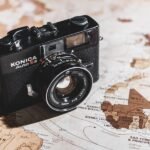Night photography can be a challenging yet rewarding genre of photography. It requires a good understanding of the basics of photography, as well as some specific techniques and equipment to capture stunning images in low light conditions. One of the key elements of night photography is understanding how to work with limited available light and how to make the most of it. This often involves using longer exposure times, wider apertures, and higher ISO settings to capture the desired image. Additionally, understanding the behavior of light at night and how it interacts with the environment is crucial for creating compelling night photographs.
Another important aspect of night photography is understanding how to work with different light sources, such as artificial lighting, moonlight, and starlight. Each light source has its own unique qualities and can create different moods and effects in a photograph. Understanding how to use these light sources to your advantage can greatly enhance the quality of your night photographs. Additionally, understanding how to work with the limitations of your camera in low light conditions, such as noise and limited dynamic range, is essential for capturing high-quality night images.
Utilizing Long Exposure Techniques
Long exposure techniques are a fundamental aspect of night photography, as they allow you to capture the movement of light and create stunning effects in your images. One of the most common long exposure techniques used in night photography is capturing light trails, such as those created by cars or city lights. To achieve this effect, you will need to use a slow shutter speed and a stable support for your camera, such as a tripod. Additionally, using a remote shutter release or the camera’s self-timer can help minimize camera shake and ensure sharp images.
Another popular long exposure technique in night photography is capturing star trails. This involves using a long exposure time to capture the movement of stars across the night sky, creating mesmerizing patterns in the final image. To achieve this effect, it is important to find a location with minimal light pollution and use a wide-angle lens with a low aperture setting to capture as much light as possible. Additionally, using a sturdy tripod and a remote shutter release is essential for capturing sharp star trail images.
Making the Most of Available Light Sources
In night photography, making the most of available light sources is crucial for creating compelling and visually striking images. One of the most common light sources used in night photography is artificial lighting, such as street lights, neon signs, and building lights. These light sources can create dramatic and atmospheric effects in your images, adding depth and dimension to your compositions. Understanding how to work with artificial lighting and using it to your advantage can greatly enhance the quality of your night photographs.
Another important light source in night photography is moonlight. The soft, diffused light of the moon can create a serene and ethereal atmosphere in your images, adding a sense of mystery and tranquility to your compositions. Understanding how to work with moonlight and using it to illuminate your subjects can result in stunning and evocative night photographs. Additionally, incorporating the natural ambient light of the night sky, such as starlight and twilight, can add a sense of magic and wonder to your images.
Using Tripods and Stabilization Methods
In night photography, using tripods and stabilization methods is essential for capturing sharp and clear images in low light conditions. The longer exposure times required for night photography make it crucial to have a stable support for your camera to minimize camera shake and ensure sharp images. A sturdy tripod is an indispensable tool for night photographers, providing a stable base for your camera and allowing you to use longer exposure times without compromising image quality.
In addition to using tripods, there are other stabilization methods that can help improve the quality of your night photographs. Using a remote shutter release or the camera’s self-timer can help minimize camera shake caused by pressing the shutter button. Additionally, using mirror lock-up mode on your camera can further reduce vibrations and ensure sharp images. Understanding how to use these stabilization methods effectively can greatly enhance the quality of your night photographs.
Experimenting with Different Camera Settings and Modes
Experimenting with different camera settings and modes is an important aspect of night photography, as it allows you to create a variety of effects and moods in your images. One of the key settings to consider in night photography is the aperture, which controls the amount of light entering the camera and the depth of field in your images. Using a wide aperture setting can help capture more light in low light conditions and create a shallow depth of field, while using a narrow aperture setting can create sharper and more detailed images.
Another important camera setting to consider in night photography is the ISO, which determines the sensitivity of the camera sensor to light. Using a higher ISO setting can help capture more light in low light conditions but may also introduce noise into your images. Understanding how to balance ISO settings with aperture and shutter speed is crucial for capturing high-quality night photographs. Additionally, experimenting with different shooting modes, such as manual mode, aperture priority mode, and shutter priority mode, can help you achieve different effects and creative results in your night photographs.
Incorporating Creative Composition and Framing
Incorporating creative composition and framing is essential for creating visually striking and compelling night photographs. The limited available light in night photography often requires careful consideration of composition and framing to create balanced and visually appealing images. One important aspect to consider in night photography is the use of leading lines, which can guide the viewer’s eye through the image and create a sense of depth and movement. Incorporating leading lines into your compositions can help create dynamic and engaging night photographs.
Another important aspect of creative composition in night photography is the use of negative space, which can create a sense of balance and harmony in your images. Using negative space effectively can help draw attention to your main subject and create a sense of serenity and simplicity in your compositions. Additionally, experimenting with different angles and perspectives can help you create unique and visually striking night photographs. Understanding how to use creative composition and framing effectively can greatly enhance the impact of your night photographs.
Post-Processing Tips for Enhancing Night Photos
Post-processing is an important step in creating stunning night photographs, as it allows you to enhance the quality of your images and bring out their full potential. One important aspect of post-processing in night photography is adjusting exposure and contrast to bring out details in the shadows and highlights of your images. Using tools such as levels, curves, and selective adjustments can help you fine-tune the exposure and contrast of your night photographs to create visually striking results.
Another important aspect of post-processing in night photography is reducing noise and enhancing sharpness in your images. The longer exposure times required for night photography can often result in increased noise in your images, particularly in darker areas. Using noise reduction tools and sharpening tools can help minimize noise and enhance the sharpness of your night photographs. Additionally, adjusting white balance and color saturation can help you create a more vibrant and visually appealing final image.
In conclusion, night photography offers unique challenges and opportunities for photographers to capture stunning and evocative images in low light conditions. Understanding the basics of night photography, utilizing long exposure techniques, making the most of available light sources, using tripods and stabilization methods, experimenting with different camera settings and modes, incorporating creative composition and framing, and applying post-processing tips are all essential aspects of creating compelling night photographs. By mastering these techniques and approaches, photographers can capture breathtaking images that showcase the beauty and mystery of the nighttime world.








